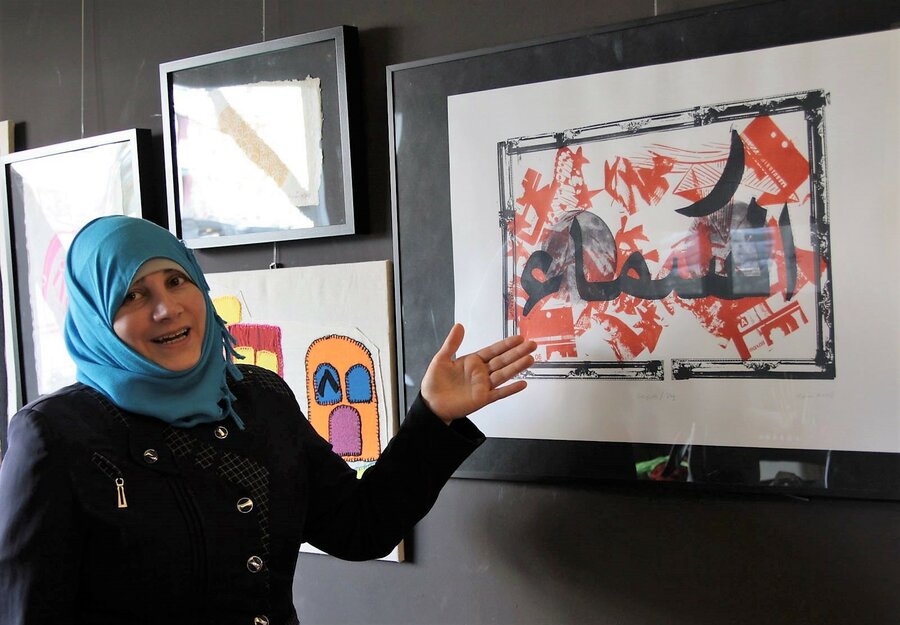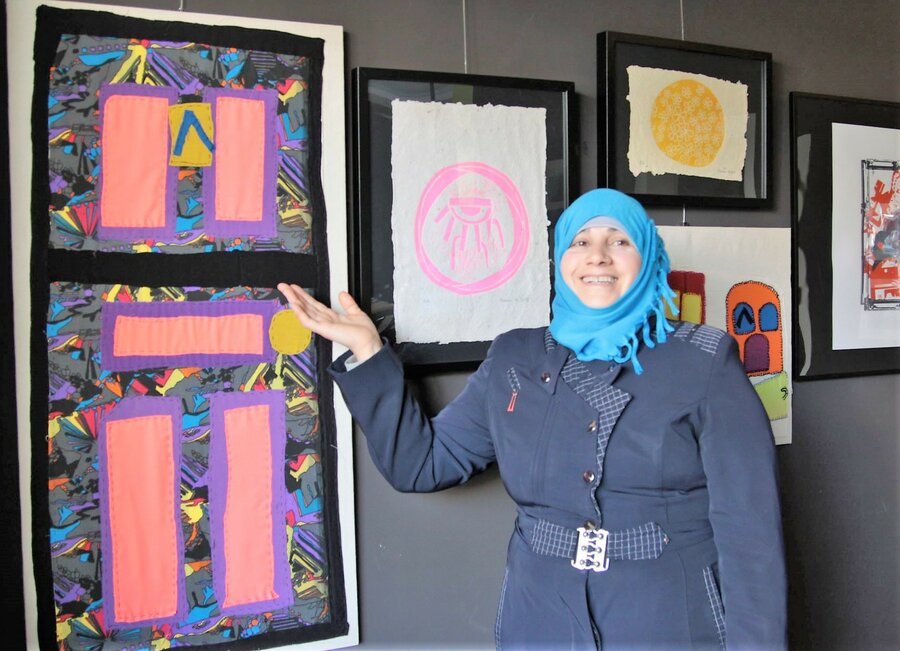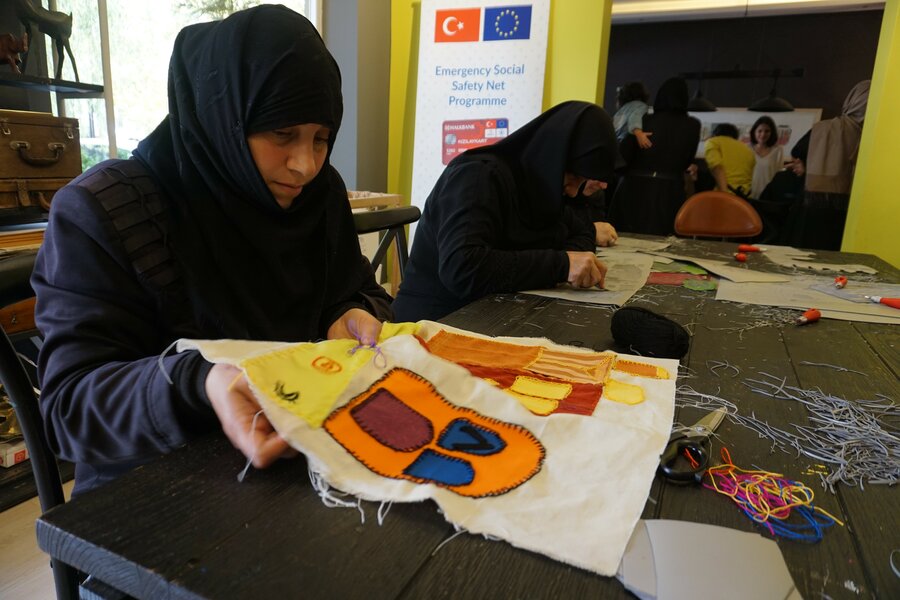‘Hope is the colour of yellow jasmine flowers’

Hanan, a 43-year-old Syrian woman, points to a picture of hers that featured in a recent exhibition of art by refugees in Ankara. The picture contains the red shapes of apparently random objects and has the Arabic word for sky (‘sama') printed boldly across its centre. What the picture means is not immediately clear, but Hanan is happy to explain.
"During the explosions, everything was thrown up into the sky," she says, referring to the bombs that landed on her town in northern Syria. "This piece reminds me of those moments, when everything became chaotic and messy."
Like millions of other Syrians, Hanan experienced the war partly as a sequence of bombs falling out of the sky. She saw the explosions blowing homes, possessions and even people into the air. Even when the bombings stopped, it seemed to her that nothing was ever in its right place.
In her ‘Sky' picture, things which should not be in the sky are floating around upside-down alongside stars and the moon. There are audio tapes, origami boats made by children and even fish — things with a personal significance for Hanan.
Symbols of stability
But Hanan says it is not a completely negative picture. The stars and the moon are symbols of quiet stability and there are also butterflies in the mix, a nod to beauty, albeit a fragile kind. "It's about the sky. But I don't see it only in one way. In the end this picture gives me more hope than sadness."
‘Sky' is one of the pictures that were featured at art exhibitions in Ankara and Istanbul in December 2018. The exhibitions spotlighted works that she and 11 other Syrian women produced during an EU-funded course that gave them basic training in three art techniques: screen printing, patchwork and lino printing.
The artworks captured some of their experiences of fleeing the war in Syria and becoming refugees in neighbouring Turkey. For Hanan, who has to provide for three children by herself, the process of finding her feet in Turkey was made easier thanks to EU-funded cash assistance. The assistance, distributed through the Emergency Social Safety Net (ESSN) programme, helped her cover the cost of basic needs such as rent, food and utilities.
The gradual transition from chaos and fear to stability and hope in Turkey can be seen in another of Hanan's works. It is the image of a door — a powerful symbol of transition — which she created using the patchwork technique.

"The colours I used have a significance," she says. "The background colour is black, and it stands for the dark days that we faced in the past. The colours that I put on top of that are lighter and brighter." The final, uppermost layers of fabric, representing the panels of the door, are bright pink — Hanan's favourite colour. "This is a good sign that the future will be better," she says.
There are about 4 million refugees in Turkey. The most vulnerable of them — around 1.5 million — are supported through the ESSN programme, which is implemented by the World Food Programme (WFP), working closely with the Turkish Red Crescent and the Turkish government. In the two years since it was launched, the ESSN has ensured that those refugees who could not support themselves have been able to lead dignified lives. Some, like Hanan, have started to move on from the trauma.
Yearning for home
Despite the relative stability, many of the refugees feel powerful nostalgia for the homes they left in Syria. Most say they want to return to them when it is safe to do so. Unsurprisingly, as refugees ask themselves about the meaning of ‘home', images of houses crop up frequently in their art.

There is also intense nostalgia for times when everything seemed much simpler. One of Hanan's paintings shows yellow jasmine flowers. "It reminds me of when my mother used to take me to the playground as a girl. On the way there were yellow flowers growing and I used to pick them. Those were beautiful days!''
Hanan comes from the northern town of Hama, famous for its river and watermills. When the war came in 2014 she took her young boys and left for Turkey, taking only a few clothes with them. Her two grown up daughters meanwhile, went to Jordan, with their husbands. This forced separation of the family is one of the reasons for the tears that appear in her ‘Pink Eye' painting.
Hanan's greatest hope is to be able to one day unite all her family in one place, preferably Syria. Asked what colour she associates with hope, her unhesitating response is tinged with nostalgia. She says it is yellow, the colour of the jasmine she picked near the park when she was a girl.
